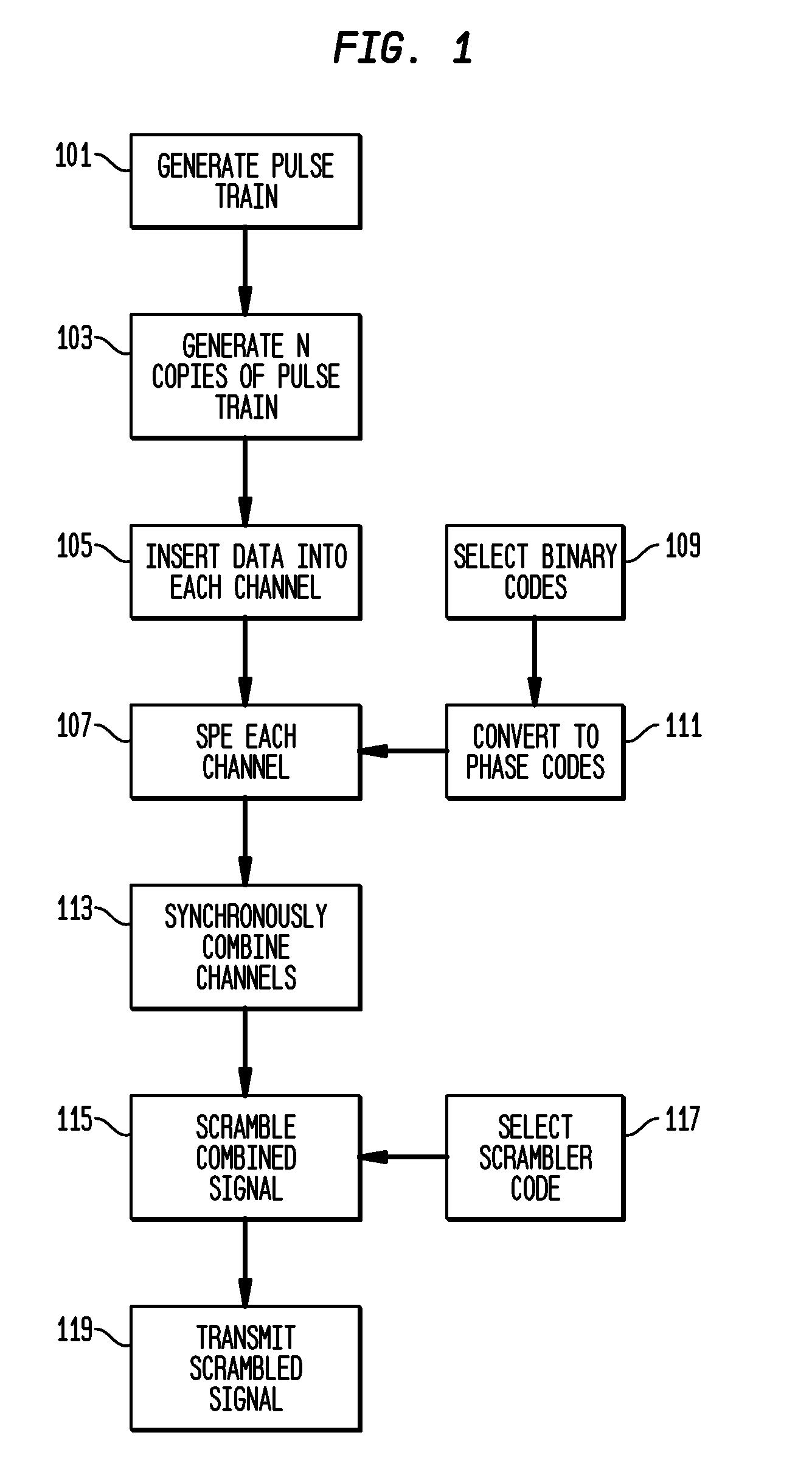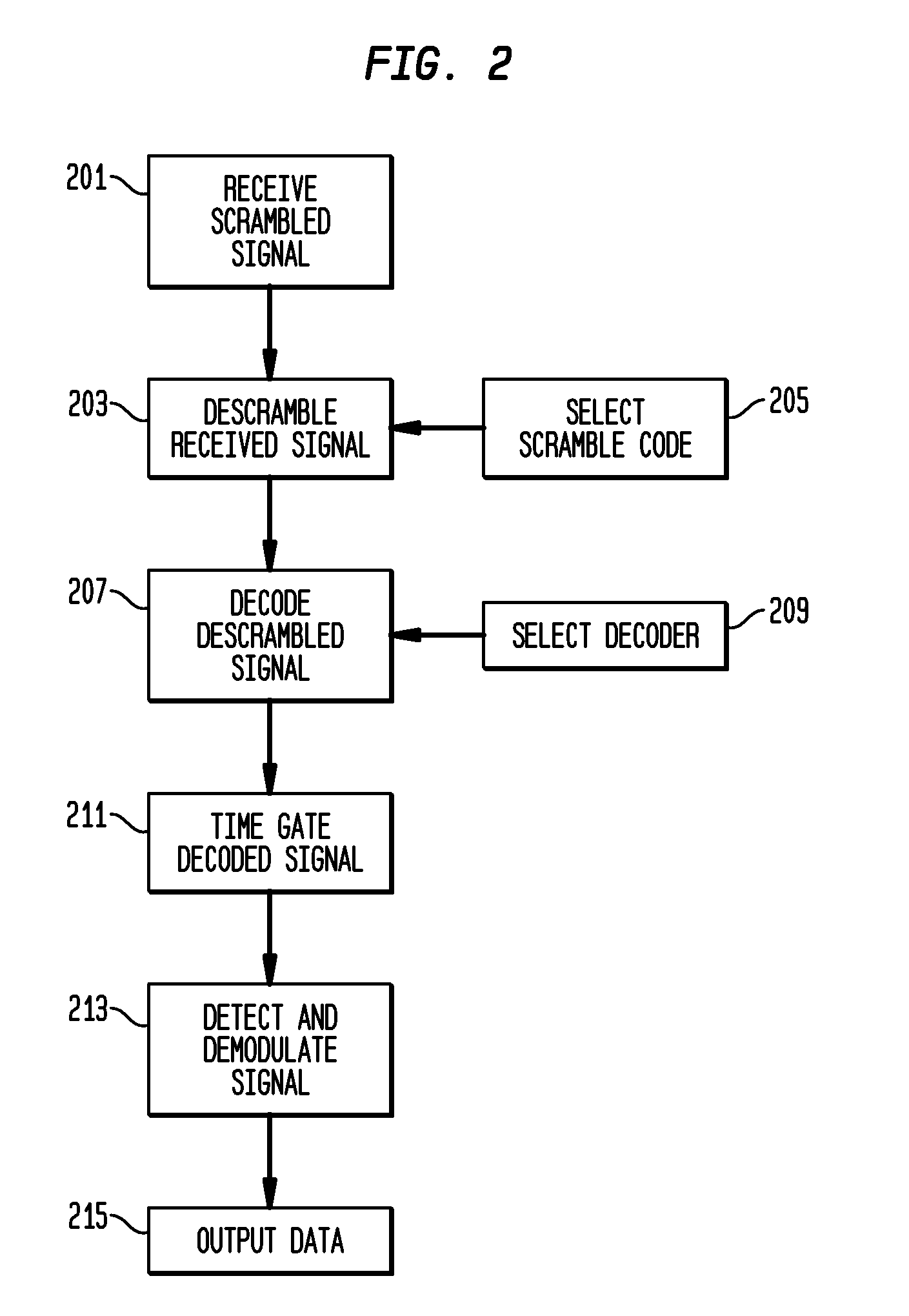System and Method for OCDM-Based Photonic Layer Security Robustness to Archival Attack
- Summary
- Abstract
- Description
- Claims
- Application Information
AI Technical Summary
Benefits of technology
Problems solved by technology
Method used
Image
Examples
Embodiment Construction
[0025]Coding and decoding are based on modifying the relative spectral phases of a set of well-defined phase-locked optical frequencies that are the output of a mode-locked laser. An embodiment of the present invention uses 8 or 16 equally spaced phase-locked laser lines confined to an 80-GHz window depending on the data rate for individual channels. Within the scope of the present invention, this 80-GHz window is considered to comprise 8 or 16 frequency bins, each bin being phase encode using a coder based on an ultrahigh resolution optical de-multiplexer.
[0026]Compared with the prior art SPE work that had used the very broad optical bandwidth of an ultra-short pulse source, the present invention has the advantage of coding individual frequency lines occupying a small tunable window. The narrower spectral extent of the coded signal in an embodiment of the present invention also limits the impact of transmission impairments, such as dispersion, and results in compatibility of the pr...
PUM
 Login to View More
Login to View More Abstract
Description
Claims
Application Information
 Login to View More
Login to View More - R&D
- Intellectual Property
- Life Sciences
- Materials
- Tech Scout
- Unparalleled Data Quality
- Higher Quality Content
- 60% Fewer Hallucinations
Browse by: Latest US Patents, China's latest patents, Technical Efficacy Thesaurus, Application Domain, Technology Topic, Popular Technical Reports.
© 2025 PatSnap. All rights reserved.Legal|Privacy policy|Modern Slavery Act Transparency Statement|Sitemap|About US| Contact US: help@patsnap.com



